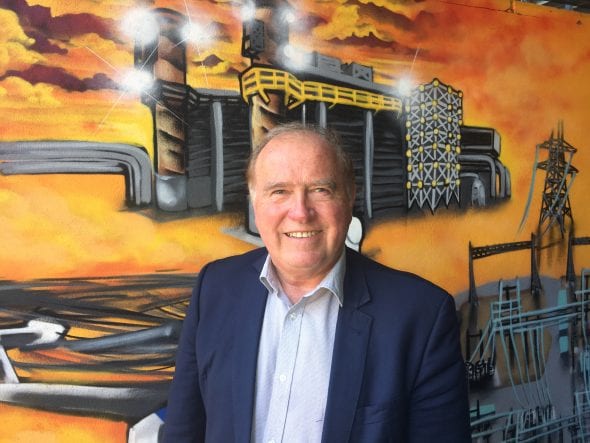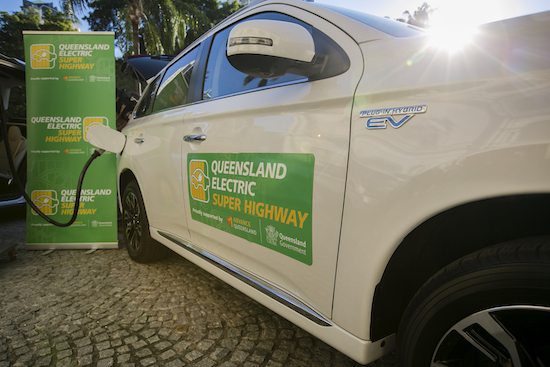The Queensland government is acknowledging a future driven by electric vehicles, by awarding funding to a Brisbane-based company whose vision is to supply low cost electricity supplies to supercharge the Queensland Electric Super Highway.
The award is a part of the “Ignite Ideas Fund “being run by the government’s innovation initiative Advance Queensland, and Vision Technologies is one of 70 companies that will now have the opportunity to scale up operations thanks to the funding.
The funding was announced by Member for Jordan Charis Mullen yesterday.
““Electric vehicles are the way of the future,” she says.
“That’s why we’ve invested $100,000 to help Visional Technologies scale-up their operation and ultimately create more jobs in Queensland.”
Headed by the API Australian Chair of Electricity Innovation and University of Queensland Professor Simon Bartlett, Visional Technologies is no newcomer to EV technology.
Visional Technologies will use the funding to create a REVOLUTION, he says, explaining that the acronym stands for Recharging Electric Vehicles On-Line Ultrafast Through Innovative Optimised Networks.
The REVOLUTION project will develop ways to deliver value to EV drivers via the EV charging network, by installing charging infrastructure at existing roadside fuel stops.

Speaking with Renew Economy, Bartlett explains how the technology will change the way the poles and wires deliver electricity.
“What we are trying is to provide visibility of medium and low voltage networks…the power companies around the world and in Australia currently have no idea what is happening on those networks in terms of electrical loads and currents voltages,” he says.
It’s like a water supply system, and the water just goes down through the systems that we have,” he says.
With more and more people putting PV on their roofs – particularly in Queensland and South Australia which more than anywhere in the world – Bartlett says that the resulting high voltage in the system has the potential to trip people’s solar panels, and even cause damage to appliances.
“We are in the business of using very smart technology to, with the minimum amount of new meters to be able inform the electricity grid operators what’s going on on those networks so they can let more people have PV in their houses.”
The Ignite Ideas funding will be used to apply the technology to ultrafast electric vehicle chargers such as those made by Queensland company Tritium.
“This particular grant is related to being able to charge electric vehicles very very fast, by using technology to monitor the network and then regulate the power it’s drawing,” Bartlett elaborates.
Current EV chargers take around 30 minutes to an hour to recharge the vehicle, while Tritium’s superchargers do so in only 9 minutes.
However, they have their drawbacks.
“If you try to connect them to the power system they will overload the power system in which case the power company will say we have to strengthen the system and you’ve got to pay for that,” he continues.
“This technology will be able to monitor what’s going on in the power grid near the charging station, and if there’s enough capacity – and 95% of the time there is some extra capacity…this is going to be smart enough to sense when there is or isn’t the capacity and automatically regulate these ultrafast high speed chargers so that for 95% of the time you can rock into the petrol station, charge your vehicles in 9 minutes.”
“In those rare times when there isn’t, well it will just regulate the charger back so instead it might take you 20 minutes.”
“We think it is fundamental technology for Australia to be able to move towards having high speed electric vehicle charging on the highway.”
The system will be trialled at the Queensland Electric Super Highway at Springfield with support from Springfield City Group and Tritium, followed by a desktop study in association witjh Energy Queensland to work out if they can use the technology without connecting it to the grid.
If successful, Bartlett hopes then to take it to the petrol station operators with a view to commercialising the technology.
“It’s all about taking a smarter technology for being able to regulate these chargers without flattening the power system,” Bartlett says.
For electric vehicles to become a real option for Australians on a widespread basis, “It’s got to be affordable and its got to be fit for purpose,” he says, adding that there must be benefit for the station operators also.
“If we can recharge then in 10 minutes instead of doing 20 cars a day you can do 2,000 cars a day. When you look at the number of cars on our roads you need to have the volume, so this solves both problems.”
“The customer can do it quickly and the owner of the recharging station can get all the vehicles through. I think it’s really important for the end user and it’s probably important for Australia if we are waiting to decarbonise and shift away from fossil fuels.”
Supported by Springfield City Group, Tritium, Energy Queensland, the Queensland Department of Infrastructure and the Queensland Department of Energy, the project will also create employment opportunities in Springside where the company is based.
“As we expand the company through this project, Visional Technologies will expand to four-times its size with 15 new jobs, and a further 15 jobs expected to be created through the technology rollout,” he continues.
The Ignite Ideas Fund is aimed at startups and small to medium businesses that are market-ready or have the potential to shake up industries through disruption, and boost Queensland’s competitive edge in global markets.
Queensland’s Chief Entrepreneur and Shark Tank panellist Steve Baxter recognises the difficulty that startups can face finding the money to take steps forward.
“Access to capital is one of the key challenges for early stage startups. The Ignite Ideas grants provide a source of funding that can take these businesses to the next level, helping them commercialise quickly,” Baxter says.
The funding awarded to Visional Technologies forms part of the Palaszczuk Government’s $650 million Advance Queensland initiative.

Bridie Schmidt is associate editor for The Driven, sister site of Renew Economy. She has been writing about electric vehicles since 2018, and has a keen interest in the role that zero-emissions transport has to play in sustainability. She has participated in podcasts such as Download This Show with Marc Fennell and Shirtloads of Science with Karl Kruszelnicki and is co-organiser of the Northern Rivers Electric Vehicle Forum. Bridie also owns a Tesla Model Y and has it available for hire on evee.com.au.


That all makes so much sense!
Go Qld.
And block the stupid NEG.
If ACT, Vic and Qld will only stand together, surely they can face down the Feds. If the Feds make threats, then go public. The Feds are running scared of losing votes, seats, power, and will do anything to reduce the risks.
Voters don’t like being threatened, so if the Feds threaten dire funding cuts, just call their bluff.
EVs are not the future. Hybrids charged by regenerative braking systems are the future. Charging stations will only be used by the 0.01% of the population who can actually afford to purchase a pure EV.
Is this about a competitor to Tritium ? Personally I’d love to see someone else get into the DCFC act since there are a number of issues with Tritium products, including the excessive price, questionable longevity, and the ridiculously short charging cables that necessitate special siting (between parking bays) that is not always acknowledged by installers (eg the Bilinga / Coolangatta airport site)